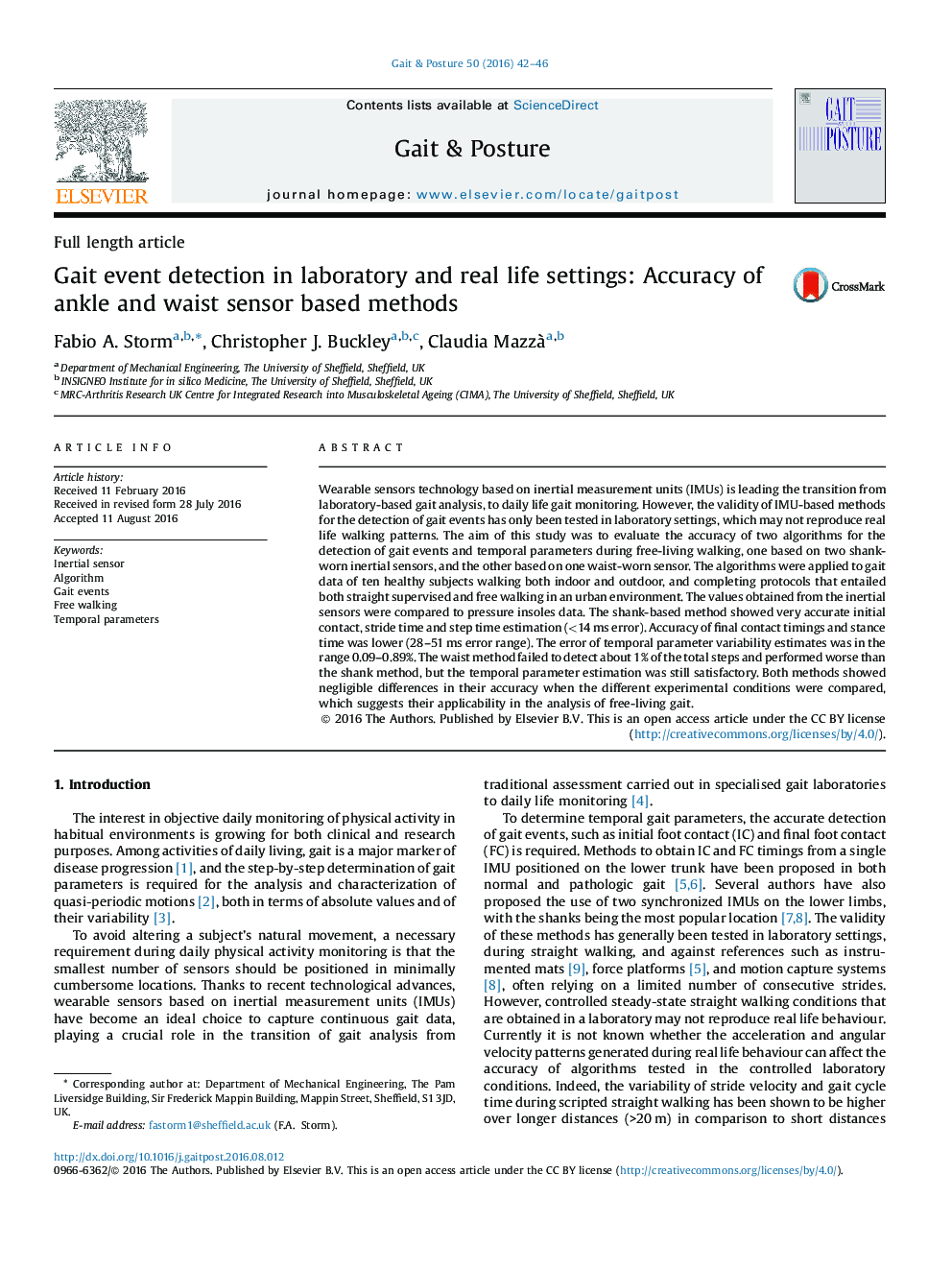| کد مقاله | کد نشریه | سال انتشار | مقاله انگلیسی | نسخه تمام متن |
|---|---|---|---|---|
| 6205293 | 1603845 | 2016 | 5 صفحه PDF | دانلود رایگان |
- We tested two methods for free living gait event detection using inertial sensors.
- The shank method was overall more accurate than the waist method.
- Accuracy of the methods in an urban environment was comparable to scripted walking.
- Results are encouraging for the application of these methods in free living gait.
Wearable sensors technology based on inertial measurement units (IMUs) is leading the transition from laboratory-based gait analysis, to daily life gait monitoring. However, the validity of IMU-based methods for the detection of gait events has only been tested in laboratory settings, which may not reproduce real life walking patterns. The aim of this study was to evaluate the accuracy of two algorithms for the detection of gait events and temporal parameters during free-living walking, one based on two shank-worn inertial sensors, and the other based on one waist-worn sensor. The algorithms were applied to gait data of ten healthy subjects walking both indoor and outdoor, and completing protocols that entailed both straight supervised and free walking in an urban environment. The values obtained from the inertial sensors were compared to pressure insoles data. The shank-based method showed very accurate initial contact, stride time and step time estimation (<14Â ms error). Accuracy of final contact timings and stance time was lower (28-51Â ms error range). The error of temporal parameter variability estimates was in the range 0.09-0.89%. The waist method failed to detect about 1% of the total steps and performed worse than the shank method, but the temporal parameter estimation was still satisfactory. Both methods showed negligible differences in their accuracy when the different experimental conditions were compared, which suggests their applicability in the analysis of free-living gait.
Journal: Gait & Posture - Volume 50, October 2016, Pages 42-46
